Safe zones for pin placement in the pediatric thigh and leg
1. Introduction
A knee-spanning external fixator requires insertion of pins into the tibial and femoral shaft.
These must avoid the physes and apophysis and follow safe zones to reduce the risk of damage to the neurovascular structures.
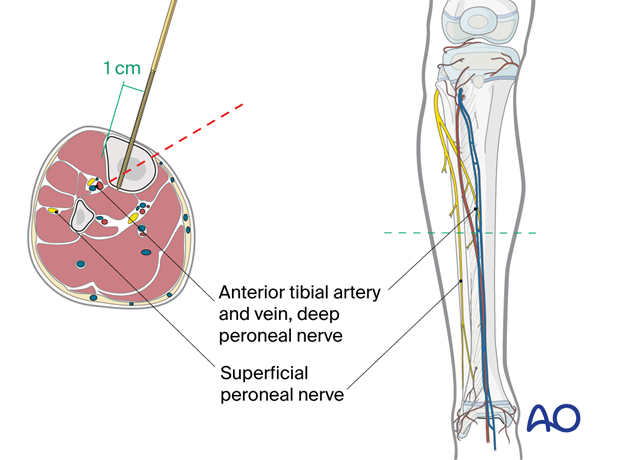
2. Thigh
Anatomy
The thigh is covered by a circumferential muscular envelope and the diaphysis of the femur by a thick periosteum.
The major neurovascular structures are located medially and posteriorly, and, therefore, the femur can safely be approached over the anterolateral region.
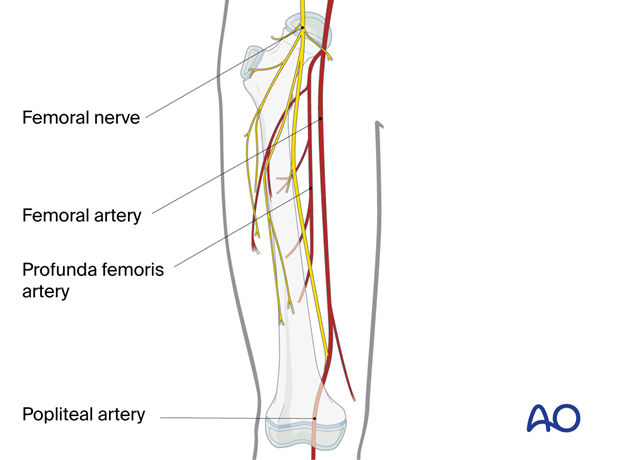
Safe zone in the middle of the shaft
The safest anatomical zones for pin insertion are the anterolateral and direct lateral regions of the femur.
Areas of soft-tissue damage should be avoided, to minimize the risk of subsequent pin-track infection.
See diagrams of cross-sections of the thigh to appreciate the location of muscle groups and neurovascular bundles at each level.
The anatomy in the area between the two solid green lines has a consistent cross-section.

Palpate vastus lateralis and rectus femoris with the patient in the supine position. The direction of the pin should be in the plane between these two muscles, as shown in the cross-section.
Avoid perforation beyond the medial femoral cortex to prevent injury to the neurovascular structures.
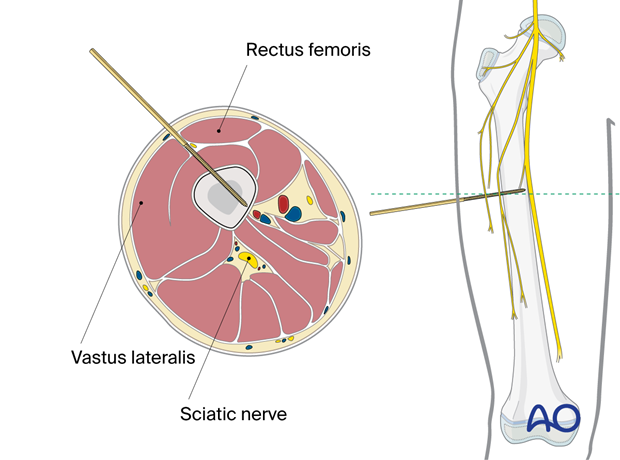
Palpate the vastus lateralis muscle belly and insert the pins in the direction shown in the diagram, aiming to obtain purchase in both cortices.
Avoid inserting pins laterally through the iliotibial tract to reduce the risk of pin loosening and pin-track infection.
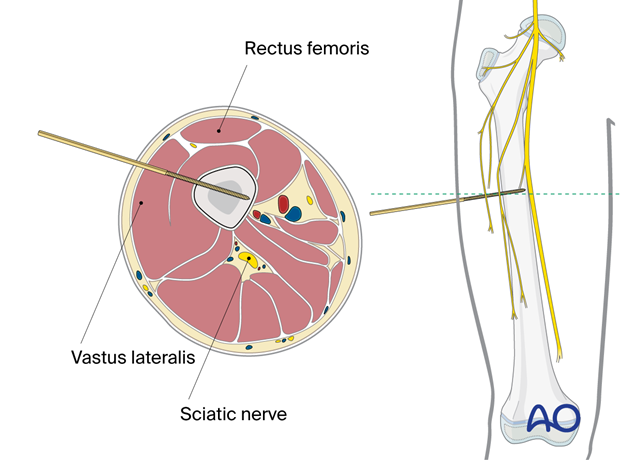
Safe zone in the distal third
Direct lateral approachThe lateral area of the distal part of the femur is easily accessible for pin insertion. The distal part of vastus lateralis is the only structure of the soft-tissue envelope to avoid.
The pin should be positioned at least 2 cm proximal to the growth plate.
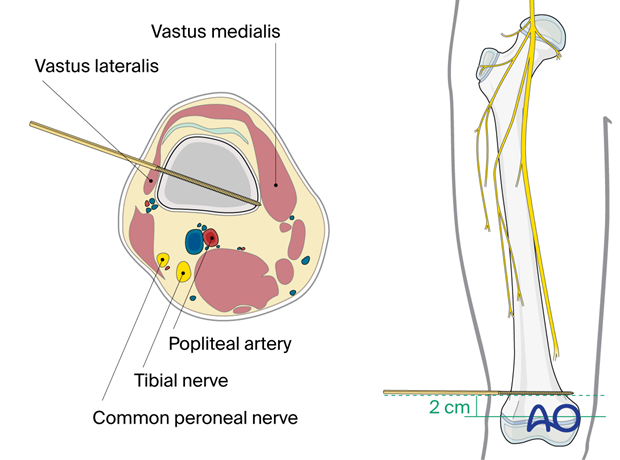
3. Lower leg
Neurovascular structures
Common peroneal nerveThe common peroneal nerve runs laterally from the center of the popliteal fossa and curves distally around the fibular head. It divides into a superficial and deep branch. Injury to the deep branch will result in loss of ankle and toe extension.
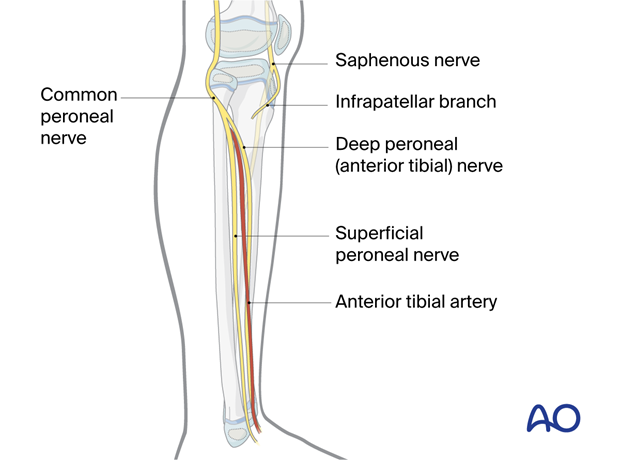
The saphenous nerve runs distally along the anteromedial aspect of the thigh. The infrapatellar nerve branches as it passes the knee joint.
There is no motor component, but injury can cause cutaneous sensory loss in the infrapatellar region and medial aspect of the calf.
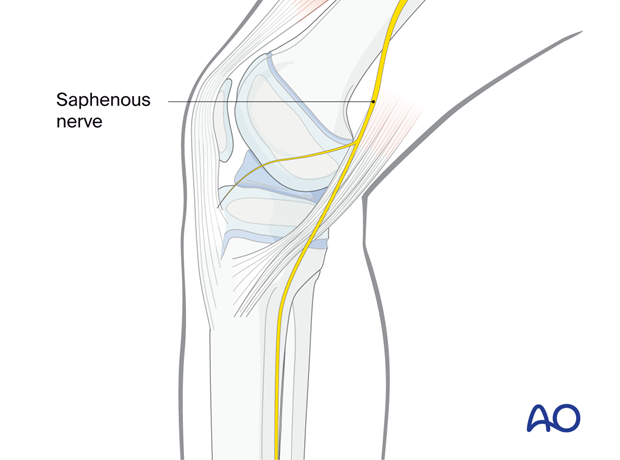
The popliteal artery runs through the center of the popliteal fossa. It divides into the anterior tibial artery, the fibular artery, and the posterior tibial artery at the level of the proximal tibial shaft.
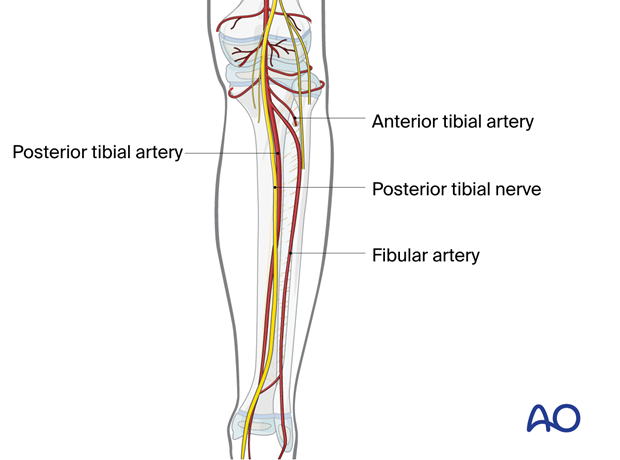
Safe zone in the midshaft of the tibia
The anterior tibial artery and vein, together with the deep peroneal nerve, run close to the posterolateral border of the tibia.
These structures are at risk if a pin is inserted in the direction indicated by the red dotted line.
The pins should be inserted medial to the tibial crest, on the anteromedial aspect of the tibia, and are angled approximately 20° to the sagittal plane.














